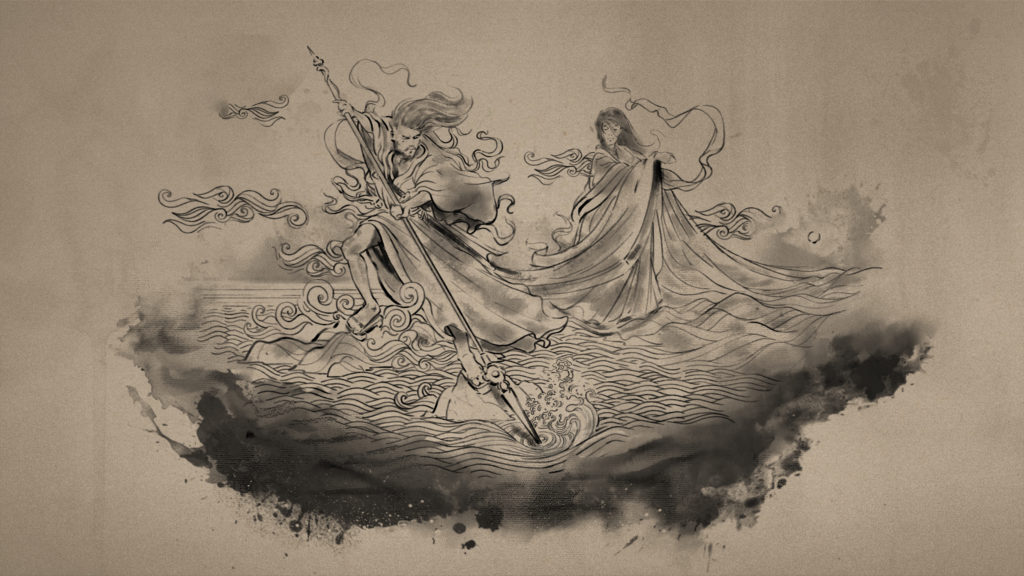
Most belief systems have a creation myth, and Shinto, Japan’s native belief system, is no exception. The Shinto creation myth focuses on Izanami-no-Mikoto and Izanagi-no-Mikoto, a pair of brother and sister kami who appeared after heaven and earth separated from chaos. They created the Japanese islands using a jeweled spear to stir the ocean.
Izanami and Izanagi decided to unite—often interpreted as marriage—but their first child, Hiruko, had birth defects. The pair believed this had happened because Izanami spoke first during their marriage ceremony. So they sent Hiruko adrift on a reed boat and repeated the ceremony properly, with Izanagi speaking first. Some Shinto shrines equate the unfortunate Hiruko with the popular kami Ebisu, so things seem to have turned out okay for that lost child.
The future of Izanami and Izanagi was less ideal. First, Izanami burned to death giving birth to the kami of fire, Kagutsuchi (or Homusubi). Izanagi killed the fiery child, but the damage had already been done. Death been unleashed onto the world.
Unable to accept the loss, Izanagi ventured into the dark underworld of Yomi to retrieve his wife. Izanami agreed to ask the kami in charge of Yomi if she could return. However, her husband must only look upon her after she got permission. Izanagi broke this agreement and lit a fire. When he saw she was in an advanced state of decomposition, he fled from her and blocked the entrance to Yomi with a boulder. The furious Izanami swore vengeance on him for breaking their union and became kami of the dead.
To purify himself from the taint of Yomi, Izanagi bathed in the sea. This act gave rise to three of the most important kami in Shinto: the sun kami Amaterasu, the moon kami Tsukuyomi, and the storm kami Susano’o. It’s also considered the beginning of traditional Shinto purification rituals, known as harae.
In Tale of Ronin, the story of Izanami and Izanagi is common knowledge. Players may encounter characters who use this tale as a symbol of their own struggles. And the story of an imprisoned woman seeking revenge on the man who locked her away may be more resonant than anyone realizes. After all, the young princess Naahime—now known as Tenshu—is beginning to make her move.